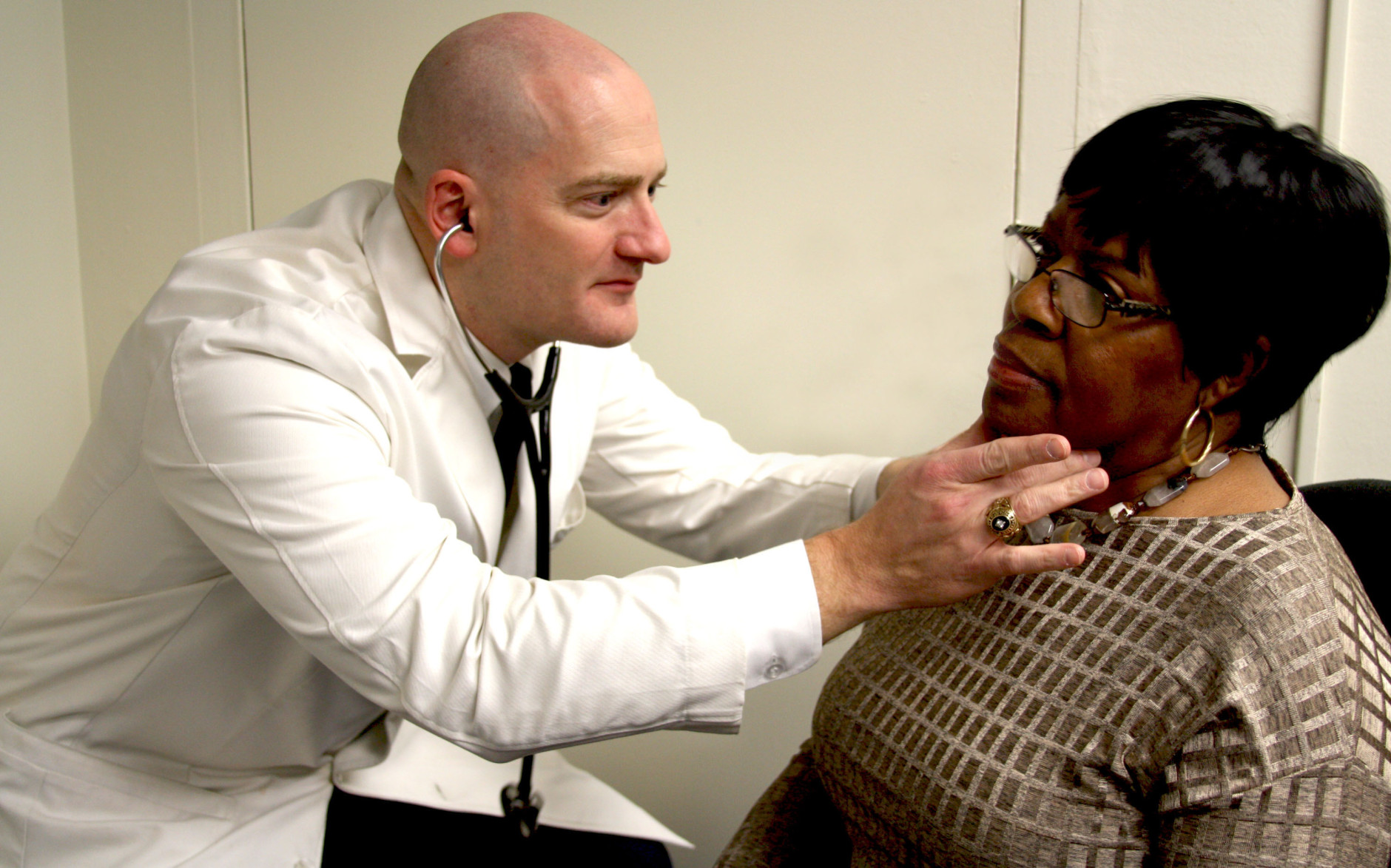
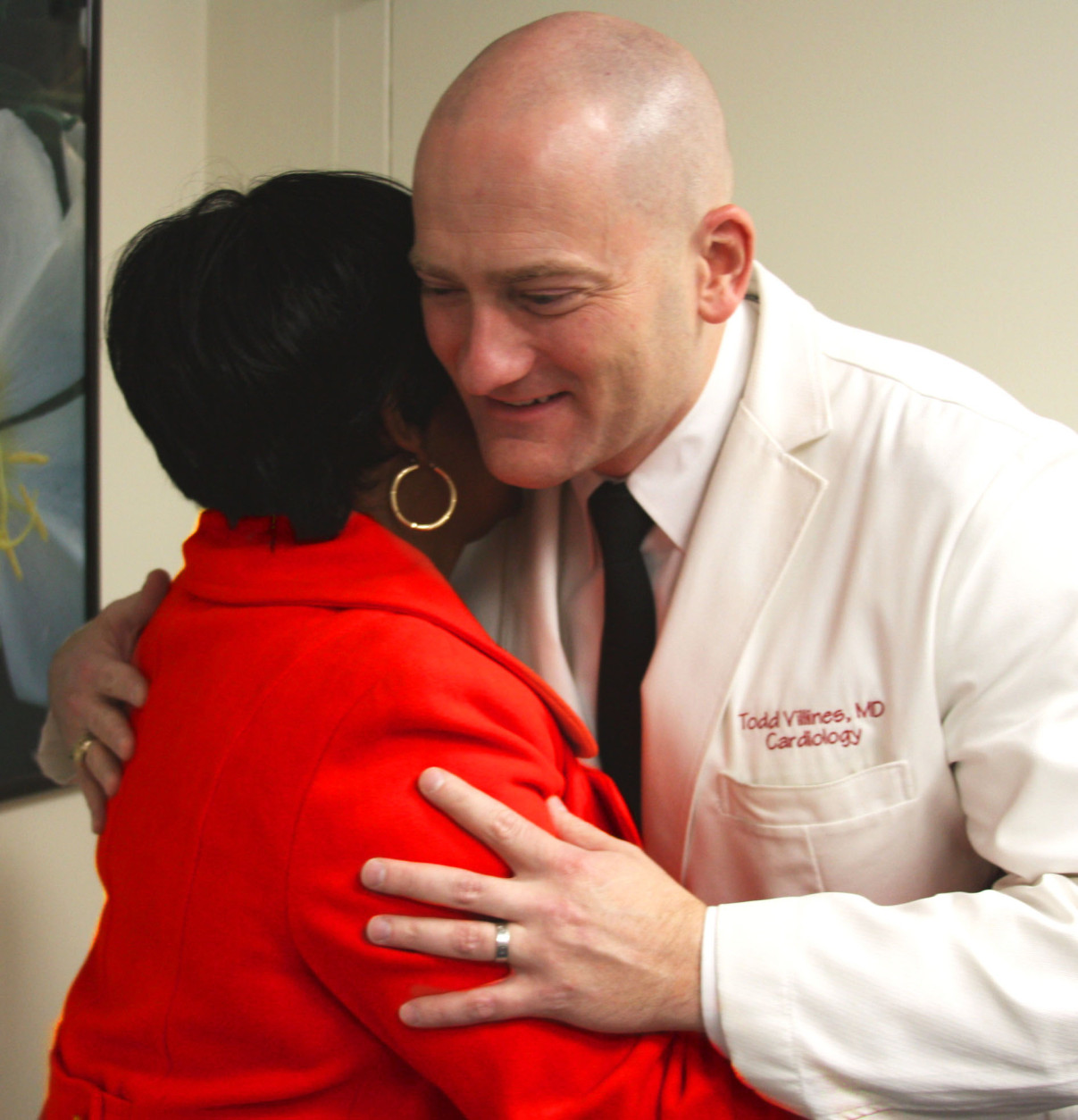

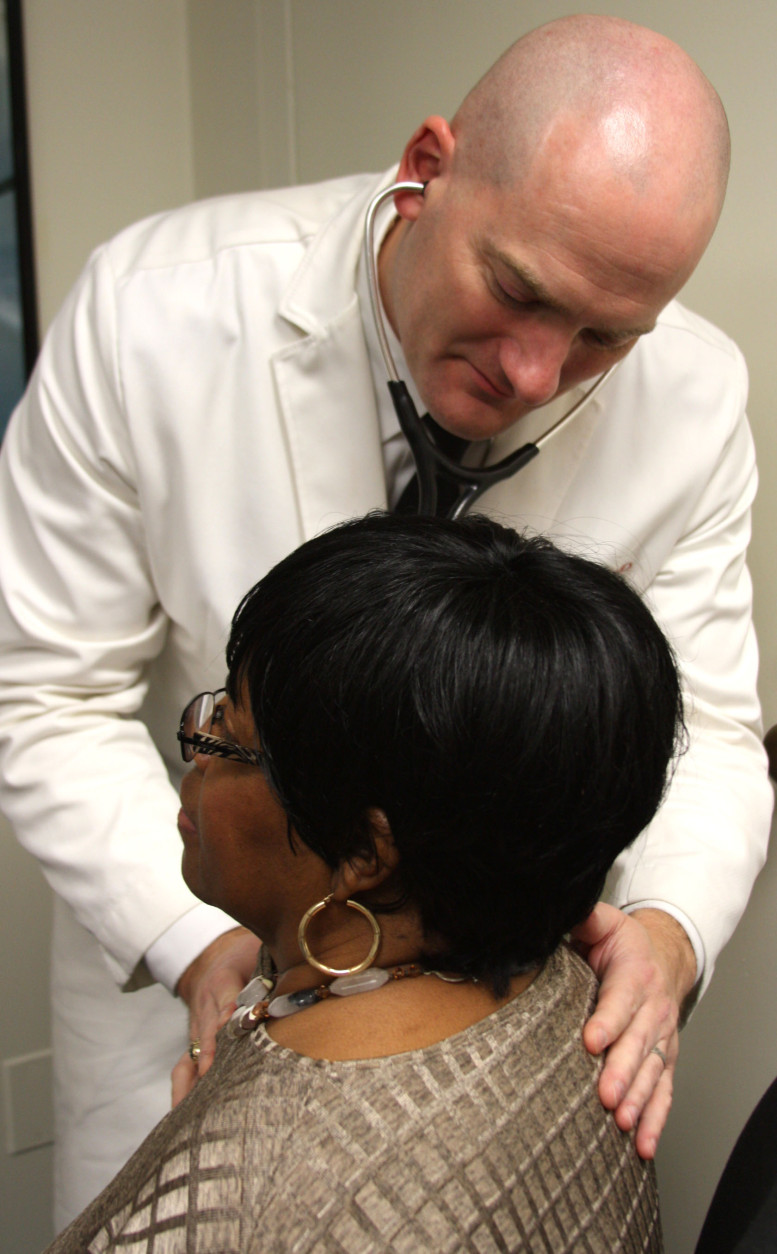
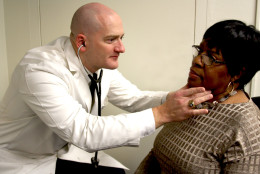
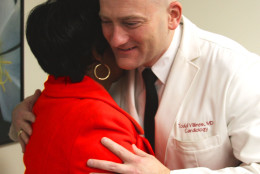
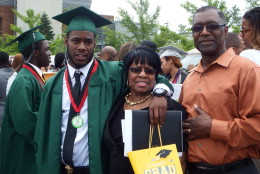
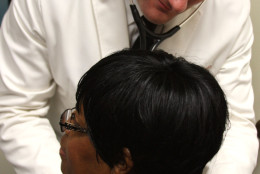
WASHINGTON — When Sharon Durham gives her doctor a hug, they share a heartfelt bond — literally.
The Hyattsville, Maryland, federal-employee-turned-caterer is living with heart failure — the most common kind of heart disease, which occurs when the heart doesn’t pump blood as well as it should.
By all accounts — 15 years after her initial diagnosis — she is living well.
“It could have been so different for me,” she says, remembering the day her heart betrayed her.
The first symptom was a shortness of breath, followed by wheezing as she made her way from her office to a nearby drugstore. A pharmacist spotted her walking down an aisle, ordered her to sit and called an ambulance.
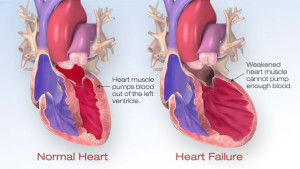
What followed was a nightmare — a blur of sights and sounds. Someone said she had congestive heart failure and muttered something about “two years left.” Durham listened from her hospital bed, bewildered and frightened.
“I was scared to death — thinking how I could only have two years to live? And what could I do to get this disease cured?” she recalls.
What followed was a series of visits to various hospitals, a pacemaker and defibrillator, a new doctor and a renewed lease on life. Now, she is an outspoken advocate for women with heart failure.
“I am very serious about talking to women about what this could do to you. It can snatch your life, just like that,” she says.
Durham’s heart is currently in the care of Dr. Todd Villines, a military cardiologist at Walter Reed National Military Medical Center, who considers her a success story in a battle against what he calls a “humbling disease.”
Most people know little about heart failure, but roughly 6 million Americans currently live with it, and that number is expected to go up substantially over the next 15 years.
“There is this tremendous awareness of strokes and heart attacks, but I think we have probably not discussed heart failure and given it its proper due,” Villines says.
The American Heart Association recently conducted a survey on the public’s understanding of heart disease and found misconceptions run rampant.
Fifty-eight percent of those polled incorrectly identified heart failure as a natural cause of death that occurs when the heart stops beating. Nearly half of respondents also said they believe heart disease is a silent killer with no symptoms.
But that couldn’t be further from the truth.
While the onset of heart failure may vary due to the exact cause of the muscle weakness, the main warning signs are constant. They include shortness of breath, fatigue and “inability to do the activities at a pace you are used to — and in many cases it is not an abrupt change, though it can be,” Villines says.
Durham is familiar with the symptoms. She was 50 when she was diagnosed, and is now an active 65-year-old, celebrating the achievements of her three grandchildren and spreading the gospel of heart health to other women in an act of faith.
Sometimes, she says, people think heart failure is too personal of a topic and they don’t want to talk about it. But Durham refuses to be silent.
“Women have to pay attention to this heart thing,” she says.
That’s because heart disease is the no. 1 killer of women. And The American Heart Association says heart failure affects about 2.4 million women in the U.S.
Awareness around the issue is important every day, but especially on Feb. 5 — the first Friday of Heart Month. It’s National Wear Red Day — when women across the nation dress in the color of a healthy heart.
The goal is draw attention to cardiovascular disease, which kills approximately one woman every 80 seconds — many of whom succumb to heart failure.
It’s the only form of heart disease that is on the rise, and Durham’s intent is clear: she’s here to stop that trend by spreading the word to more women.
Heart Failure Misconceptions and Misunderstandings







